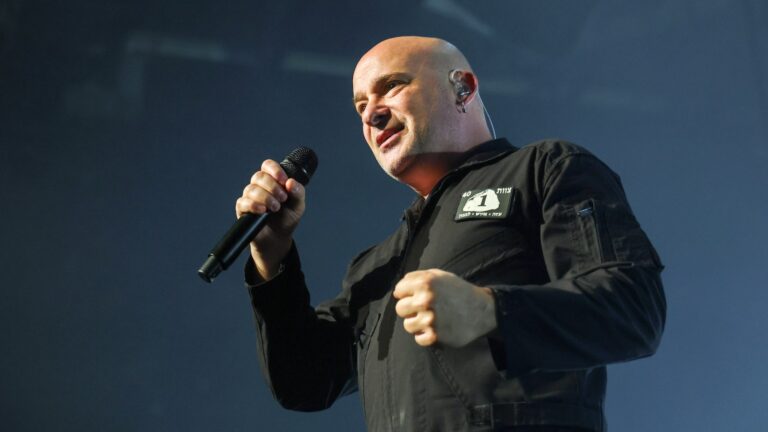Starting in the mid-2010s, nothing was hotter on country radio than a poppy, swoonworthy sub-genre dubbed “boyfriend country.”
What Is “Boyfriend Country”?
You know the type of song: Thomas Rhett‘s “Die a Happy Man” (2015), Dan + Shay‘s “Speechless” (2018) and Brett Young‘s “In Case You Didn’t Know” (2017) are three definitive examples, all pairing adulation for a love interest with pop-friendly production.
Some listeners loved to hate ’em, but boyfriend country songs made an impact.
“Speechless” was certified 7x platinum by the RIAA and wound up at No. 2 on the year-end Billboard Hot Country chart the year it was released.
“Die a Happy Man” arguably remains one of Rhett’s signature songs to date. It won several Song and Single of the Year titles at awards shows across 2016 and 2017.
And Young scored his first-ever platinum plaque from the RIAA for his diamond-certified “In Case You Didn’t Know.”
Read More: The 50 Greatest Country Love Songs Ever
Chart metrics aside, the boyfriend country movement impacted listeners in a way greater than fandom: These songs became the soundtrack to their biggest love moments.
Fans chose to play them during proposals and at their weddings, and a lucky few even got a serenade from the artists themselves.
All country music is meant to speak directly to listeners’ lives, but boyfriend country fit into many fans’ personal love stories more closely than many other kinds of songs could.
Why Did Boyfriend Country Fade Away?
There’s a few different explanations, and we’ll start with the simplest one.
Artists sing about their real lives, and the honeymoon phase doesn’t last forever. Many of the artists who dominated the boyfriend country era outgrew it: They married their muses, had some kids and started getting more interested in writing songs about parenthood, self-reflection and middle age.
It’s much the same story as how boyfriend country’s predecessor — bro country — rose to prominence and then vanished.
Bro country artists wrote songs about partying, cutting loose and trying to get the tan-legged girl next door to slide her sugar-shaker into the shotgun seat of their truck.
But after their partying days were behind them and things were getting serious with the girl in the shotgun seat, they started swapping those themes out for the more romantic boyfriend country era.
Read More: 11 Songs That Changed Modern Country Music
You can see that arc especially neatly in Florida Georgia Line‘s trajectory, from the flirty (and ubiquitous) 2012 hit “Cruise” to the mellower and more mature “H.O.L.Y.,” released in 2016.
But that’s not the only reason for the decline of boyfriend country. After all, new and younger artists are breaking into the genre all the time, with their own girlfriends to croon for.
Around the end of the 2010s, though, there were some dominant forces taking country music in a new direction.
Which Big Artists Moved Country Music Away From Boyfriend Country?
Hardy might not be the first name that comes to mind, but if you ask us, he did perhaps more than anyone else to single-handedly turn the tide.
Forget about his output as a recording artist for a minute and just think about Hardy as a songwriter.
He got his first major cuts in Nashville writing for Florida Georgia Line — including the boyfriend country tracks “Simple” and “Talk You Out of It” — and then began a fruitful and long-lasting songwriting partnership with Morgan Wallen.
Hardy had — and still has — a rare talent for emulating what’s popular on the radio, but also being one step ahead of country music trends. He addressed that position in his song “Mockingbird,” singing “I’m a mockingbird / Singing songs that sound like other songs you’ve heard.”
But that same song is also one half of the title track for his The Mockingbird & the Crow album, a dual-genre project that brought together Hardy’s love of country and hard rock.
Read More: Hardy Says Boundaries in Music Are ‘Completely Ridiculous’
That genre-straddling, forward-thinking edge prompted him not only to shape country music in his own releases, but also to start writing songs that pushed other big artists into something newer, harder, more down-and-dirty in its description of country lifestyle.
Massive hits like Blake Shelton‘s “God’s Country” — which is probably about as close as we’ll ever get to hearing Shelton sing a metal song — and Wallen’s forlorn “Sand in My Boots” ensued.
And all of the sudden, the genre was moving away from bubbly wedding songs and toward a grittier sound. Fewer of country’s top songs were about romantic love, and more were about redneck pride, dark storytelling and foiled romance.
The love songs were still there, but not as syrupy. Hardy himself sang in “Boyfriend,” an ode to his now-wife Caleigh, “I don’t wanna be your boyfriend anymore.” The twist, of course, was that he wanted to be her husband instead.
Hardy is a happily married man. But another nail in boyfriend country’s coffin was that country was quickly becoming dominated by an artist who was — in a way almost inherent to his musical identity — nobody’s boyfriend.
That’s Morgan Wallen, whose best songs are about heartbreak, missed connections and lapses in trust.
Read More: A Timeline of Morgan Wallen’s Legal Troubles + Controversies
“Love Somebody,” “Whiskey Glasses,” “Last Night,” “I’m the Problem” — all love songs, but none of them have a happy ending. Wallen’s private life is scrutinized enough that a boyfriend country-style love song might even ring false coming from him.
Zach Bryan‘s non-boyfriendness is on par with Wallen’s: He’s almost as well known for his most recent breakup as he is for his music.
Bailey Zimmerman and Riley Green are a couple more newer stars whose single status has played into their appeal and musical output.
But even the members of that group of artists who are coupled — like Ernest and Gavin Adcock — have leaned more into heartbreak or lifestyle-focused songs than they have into adoring love ballads.
There’s one more male artist who’s responsible for a massive shift in country trends in the post-boyfriend country era. That’s Jelly Roll, a figure so unprecedented in country music superstardom that he essentially rewrote the rules for what a country hit sounded like, and what its subject matter might be.
Jelly is married to Bunnie Xo, and he has released love songs inspired by her. But those aren’t the songs that fans know and love best.
Read More: 27 Jelly Roll Facts That Even Mama Might Not Know
His biggest impact comes from songs like “Son of a Sinner,” “Liar” and “Save Me,” all songs that wrestle with inner demons and pull from his personal journey as a former drug dealer and incarcerated teen to becoming a superstar who preaches messages of redemption and faith.
Jelly’s catalog cements a new kind of path to country music superstardom. That path isn’t about idealizing a relationship with a romantic partner. It’s about working on a relationship with yourself, and with your God.
What Happened to the Artists Known For Boyfriend Country?
Some have faded in popularity. A few have continued to find new ways to sing the love songs that suited their musical identities so well.
And others have expanded into new territory.
Keep reading for a look at five of the country artists most closely known for their boyfriend country songs — Thomas Rhett, Kane Brown, Dan + Shay, Brett Young and Chris Lane — and a recap on where they are today.
5 Definitive Boyfriend Country Artists + Where They Are Today
Starting in the mid-2010s, nothing was hotter on country radio than a poppy, swoon-worthy sub-genre dubbed “boyfriend country.”
But as the tides changed and fresh artists and songwriters led the genre in a new direction, boyfriend country disappeared. Keep reading to learn about five of the artists best known for their boyfriend country songs, and how their music has shifted in recent years.
Gallery Credit: Carena Liptak



